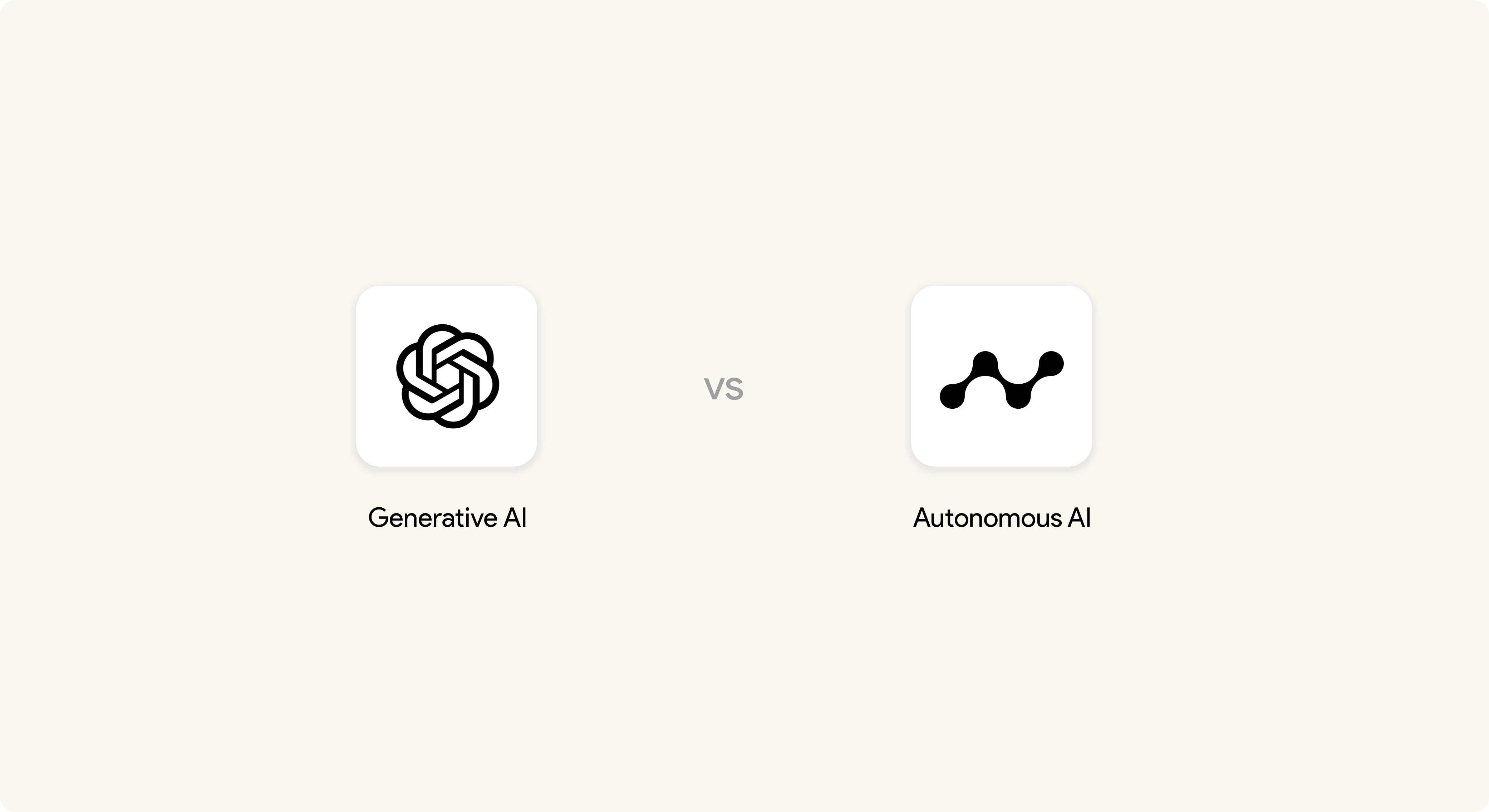Generative AI vs Autonomous AI
Exploring the Future of AI
In the ever-evolving landscape of artificial intelligence, two powerful approaches are revolutionizing industries: Generative AI and Autonomous AI. While both leverage cutting-edge technology to solve complex problems, they differ fundamentally in their design, capabilities, and impact. Understanding these differences can help organizations determine which technology best aligns with their goals.
What Is Generative AI?
Generative AI focuses on creating content, ideas, or solutions by learning patterns from data. These systems, powered by advanced machine learning models, generate text, images, music, code, or other creative outputs. Popular tools like OpenAI’s GPT and DALL·E exemplify generative AI’s ability to produce human-like content and enable innovation.
Key Features of Generative AI:
- Content Creation: Produces high-quality text, visuals, or audio for applications ranging from marketing to entertainment.
- Pattern Recognition: Learns from extensive datasets to mimic human creativity and solve unique challenges.
- Adaptability: Customizable for specific use cases, such as conversational agents or automated design tools.
What Is Autonomous AI?
Autonomous AI takes the concept further, focusing on action and decision-making. These systems are designed to evaluate real-world scenarios, make informed decisions, and execute actions independently. Autonomous AI reduces reliance on human intervention by seamlessly integrating decision-making with execution, making it ideal for operational tasks.
Key Features of Autonomous AI:
- End-to-End Decision-Making: Evaluates scenarios, makes data-driven choices, and executes actions without human oversight.
- Operational Autonomy: Handles tasks like service management, project prioritization, and resource allocation.
- Scalability: Adapts to diverse industries, from healthcare to logistics, by managing complex workflows autonomously.
Generative AI vs Autonomous AI: Key Differences
Use Case Spotlight: Autonomous AI in Action
Let’s consider a real-world scenario: Service Desk Management.
Traditional service desks require human agents to monitor, prioritize, and resolve tickets, leading to inefficiencies. An Autonomous AI solution transforms this process by:
- Resolving tier-1 and tier-2 support tickets independently.
- Dynamically prioritizing and escalating issues only when necessary.
- Executing actions in third-party applications, such as updating customer records or scheduling appointments, in real time.
Benefits of Each Approach
Generative AI:
- Enhanced Creativity: Offers unique insights and solutions by generating new content.
- Efficiency in Ideation: Speeds up creative processes for marketing, design, and R&D.
- Versatile Applications: Adapts to fields like customer service, entertainment, and software development.
Autonomous AI:
- Operational Efficiency: Streamlines workflows, reducing costs and turnaround times.
- Scalability: Expands to meet increasing demands without additional human resources.
- Improved Decision-Making: Ensures consistent and accurate results across operations.
The Future of Generative and Autonomous AI
The AI landscape is continuously evolving. Generative AI is becoming more sophisticated, producing increasingly human-like outputs, while Autonomous AI is advancing its decision-making capabilities to handle more complex tasks. These technologies are not mutually exclusive—combining them could unlock even greater potential, such as systems that not only generate ideas but also act on them autonomously.
The Future Is Autonomous
Generative AI has undoubtedly transformed content creation, but its true potential is realized when integrated into an Autonomous AI system. Autonomous AI combines creativity, decision-making, and execution to deliver end-to-end solutions that help organizations operate independently.
Netdots: Autonomous AI for Every Organization
At Netdots, we specialize in building Autonomous AI systems. Some of these systems are pre-built software products tailored for specific needs, such as Service Management, which autonomously handles service desks, resolves tickets, and optimizes workflows. Others are custom solutions built on our Autonomous AI platform, Oros, designed to address unique operational challenges across industries.
By combining the creativity of Generative AI with the power of Autonomous AI, our systems enable organizations to operate autonomously, freeing them to focus on strategic growth.
Ready to Embrace the Future?
Explore how Netdots and our Autonomous AI systems can empower your organization.


